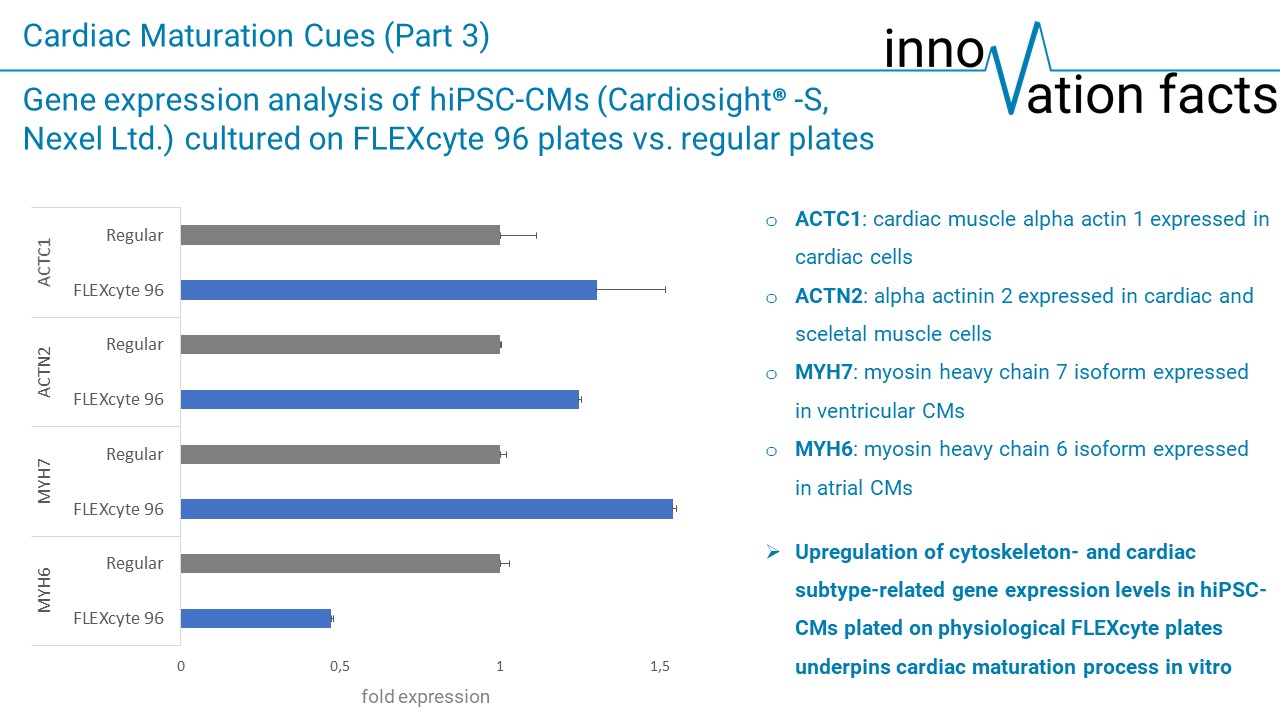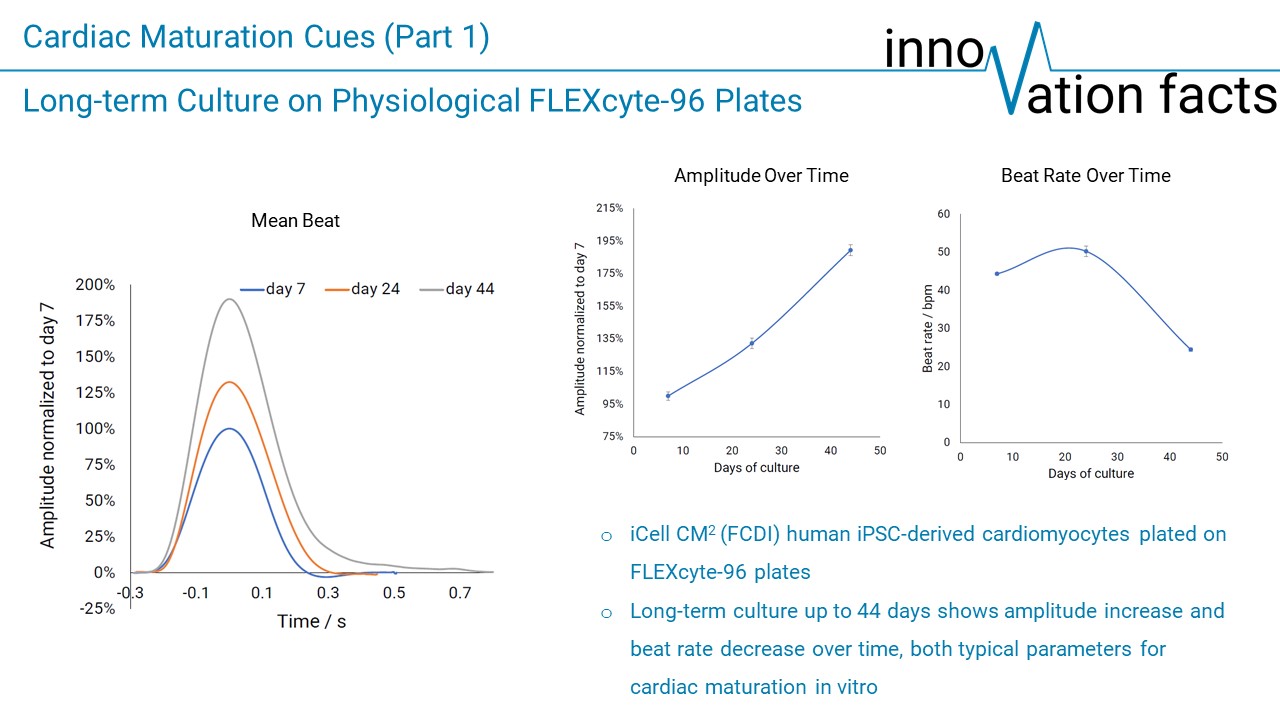Autor: Bettina Lickiss
-

innoVation Facts – Cardiac Maturation Cues (Part 3)
The last part of our innoVation Facts series dealing with cardiac maturation cues focused on gene expression analysis of human iPSC-derived cardiomyocytes (hiPSC-CMs) cultured either on physiological FLEXcyte or regular cell culture plates. The data shows increased expression levels of ACTC1 and ACTN2 genes (both producing cytoskeleton-related proteins) as well as the MYH7 gene (important…
-

innoVation Facts – Cardiac Maturation Cues (Part 2)
In our second part of the innoVation Facts series addressing cardiac maturation cues, we focus on phenotypic changes that take place when human iPSC-cardiomyocytes (hiPSC-CMs) are cultured on FLEXcyte 96 plates to emulate the physiological conditions of the human heart. To visualize changes in actin filament development, staining with Phalloidin was performed on Cardiosight-s (Nexel…
-

innoVation Facts – Cardiac Maturation Cues (Part 1)
We are happy to announce our new innovation facts blog focussing on news about the FLEXcyte technology and related topics! We start the blog with a series about cardiac maturation cues, a hot topic for everyone working on human iPSC-derived cardiomyocytes. In this first part, we show you how to use the physiological environment of…
